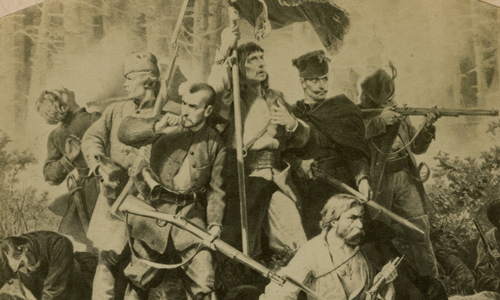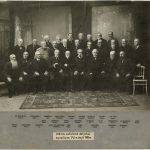History of the City: from the Rebellion to the Rebellion
After survival of many fires and other persecuting cataclysms and a miraculous ability to recover after each of them, Šiauliai deserves to be called the city phoenix; this image also remains in the 19th century. The city was twice greatly affected by the rebellions that took place in the Russian Empire, in the territory of the present-day Lithuania: in 1830-1831 and 1863-1864, first local nobles rebelled, willing to restore The Commonwealth of Both Nations or their former status, which was humiliated in the Russian Empire, and later, ordinary people, students rebelled against the power of oppressors and invaders. But before that, Šiauliai city knew what it meant to appear between two world powers, in the intercontinental conflict of two almost different civilizations: the Swedish Deluge period in the 17th century and the Northern War in the 18th century. In 1812, Šiauliai was twice crossed by troops of Napoleon Bonaparte, the Emperor of France. In the towns of Lithuania the Napoleonic administration organized national guards of townsmen to maintain public order, the main function of which were collection of taxes and duties in order to supply French troops with food and fodder. Šiauliai was not an exception. They also had to take care of foreign troops, not only setting out towards Moscow but also returning home after a failed campaign. This caused a lot of financial losses to the city, destroyed property and demanded human sacrifices; the city again declined almost by half.
The Tsarist authorities did not help to cover these losses and in 1830, the city that still had not managed to recover from the Napoleonic War again found itself at the epicentre of the military conflict: the participants of the insurrection from Raseiniai decided to choose Šiauliai as one of the first bases of military entrenchment. The Tsarist troops, who understood the strategic significance of Šiauliai for the rebels, quickly attacked the city and regained it, but Šiauliai time and again moved from hands to hands between the two sides of the conflict, until finally the rebels, having lost the decisive battle near Lake Talkša, withdrew and eventually lost the very insurrection. Šiauliai paid much for it again. Part of the city’s inhabitants was sentenced to death, others were either deported to Siberia or left fleeing from repressions. The city itself, as one of the major centres of the rebellion, underwent rapid colonization of the country in order to stabilize the situation by bringing Orthodox people who were granted a number of privileges. Judging from sparse numbers of settlers, it seems that this tactics did not quite work. Nevertheless, the city managed to recover and rebuild, but again fell into the epicentre of the collision of two different positions in 1863-1864. This time the city no longer needed to oppose the Tsarist Army. The events of 1863 promoted a feudal relationship crisis, when an unconsidered decision had a major impact on the fates of most people. In 1861, a decree is issued, granting civic freedoms to peasants, who till that time were tormented by serfdom, but not granting them the right to possess at least some cultivable land for free, which instantly turned them free but landless. This provokes a chain of reactions and protests responding to them in the Empire, which ended with a new armed rebellion against the Tsarist rule. On February 9th, 1863, the governor-general informed the governor of Kaunas that two infantry squads and two cavalry squadrons were arriving to prevent possible turmoil in Šiauliai. Due to these security measures, Šiauliai no longer fell into the rebels’ hands, because the arrived Tsar’s army did not give way to this position during the whole rebellion. On the other hand, it was far from calm, as persistent struggles were taking place near Šiauliai, influencing communication relationships with other cities and the like. Here, rebels confronted the enemy army 22 times, although most of the rebellion fights took place near Trakai (23) and Panevėžys (25). When the rebellion was suppressed, Šiauliai was turned into a place of rebels’ execution. In September, 1863 – February, 1864, on the outskirts of the city, in the holdings of count Zubovas, the commanders of the rebellious civic squads B. Kvietkauskas, P. Bagdonavičius, A. Kobylinskis and also participants of the reballion J. Morkis, M. Scipionas, K. Brazulis, A. Kučevskis and others were hanged and shot. Now, this place where the rebels were buried is known as the Hill of Rebels, marked with the Independence Monument, honouring the rebels and protecting their bones.












Leave feedback